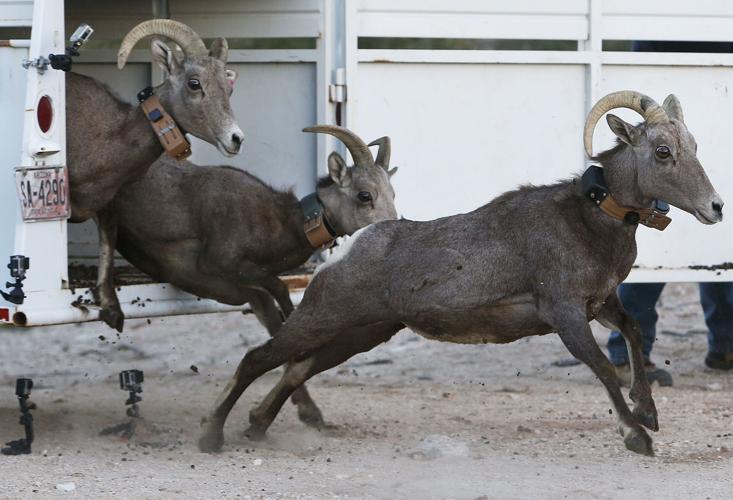About 30 bighorn sheep will be captured in mountains near Yuma and relocated to the Catalina Mountains in November — part of a continuing effort to rebuild a bighorn herd that disappeared from the range north of Tucson in the 1990s, state wildlife officials confirmed.
One cause for concern: At least four and possibly five bighorns previously brought to the Catalinas have died of pneumonia in recent months. As of this month, 35 GPS-collared sheep are known to be alive in the range.
Capture plans are aimed at minimizing further pneumonia problems, said a spokesman for the Arizona Game and Fish Department, which is overseeing the bighorn project with input from a citizens advisory committee.
“The source populations near Yuma have had prior exposure to pneumonia, so they will have some resistance to the disease,” said spokesman Mark Hart. “Pneumonia is a limiting factor for bighorn populations throughout the West, but it doesn’t have to be devastating. It’s a matter of being mindful as we move forward.”
A longtime opponent of the bighorn project — in which sheep were brought to the Catalinas in November 2013 and November 2014 — called the plan for additional relocations “wasteful” because some two dozen of the previously relocated sheep have died. Most of the deaths were from predation by mountain lions or disease.
CAPTURE SITES
Hart said plans call for capturing about 30 sheep from sites in the Imperial Hills, Middle Mountains and Plomosa Mountains in the Yuma area during the third week of November. Only two of the sites might be used depending on availability of sheep.
“It’s hard to project how many will be captured from each location,” Hart said.
Capture crews, transported in helicopters and using nets to snare sheep, will aim to capture about 24 ewes and six rams.
“The main reason for this is to end up with more lambs,” Hart said. “The more ewes you have, the more lambs you’ll get. And the rams will breed with multiple ewes.”
Hart said the release site in the Catalinas “will be as close as possible to the existing herd. Most of the herd is in the Pusch Ridge area.”
OPPONENTS’ VIEWS
Cyndi Tuell, an attorney who has worked with the Friends of Wild Animals in the group’s opposition to the bighorn project, said, “It is irresponsible for the advisory committee, especially the environmental groups on the committee, to support the capture and relocation of more sheep to the Santa Catalina Mountains at this time in light of the disease outbreak which is occurring not only in the Catalinas, but across the state.”
Ricardo Small, a member of Friends of Wild Animals, said he opposes the planned November release of additional bighorns.
“Around half the bighorn sheep in the Catalinas from the previous two transplants are dead. Wasteful,” Small said. “If I were a bighorn hunter, I would be angry that there are now fewer bighorn sheep in Arizona.”
Hart, of the Game and Fish Department, said that some sheep deaths are to be expected, but he noted that the bighorn population in Arizona has increased dramatically since the 1950s.
“We’ve seen the bighorn population in the state go from 1,500 in 1957 to 6,000 today,” he said. “And that’s partly the result of moving sheep” from healthy populations to ones in need of more animals.





